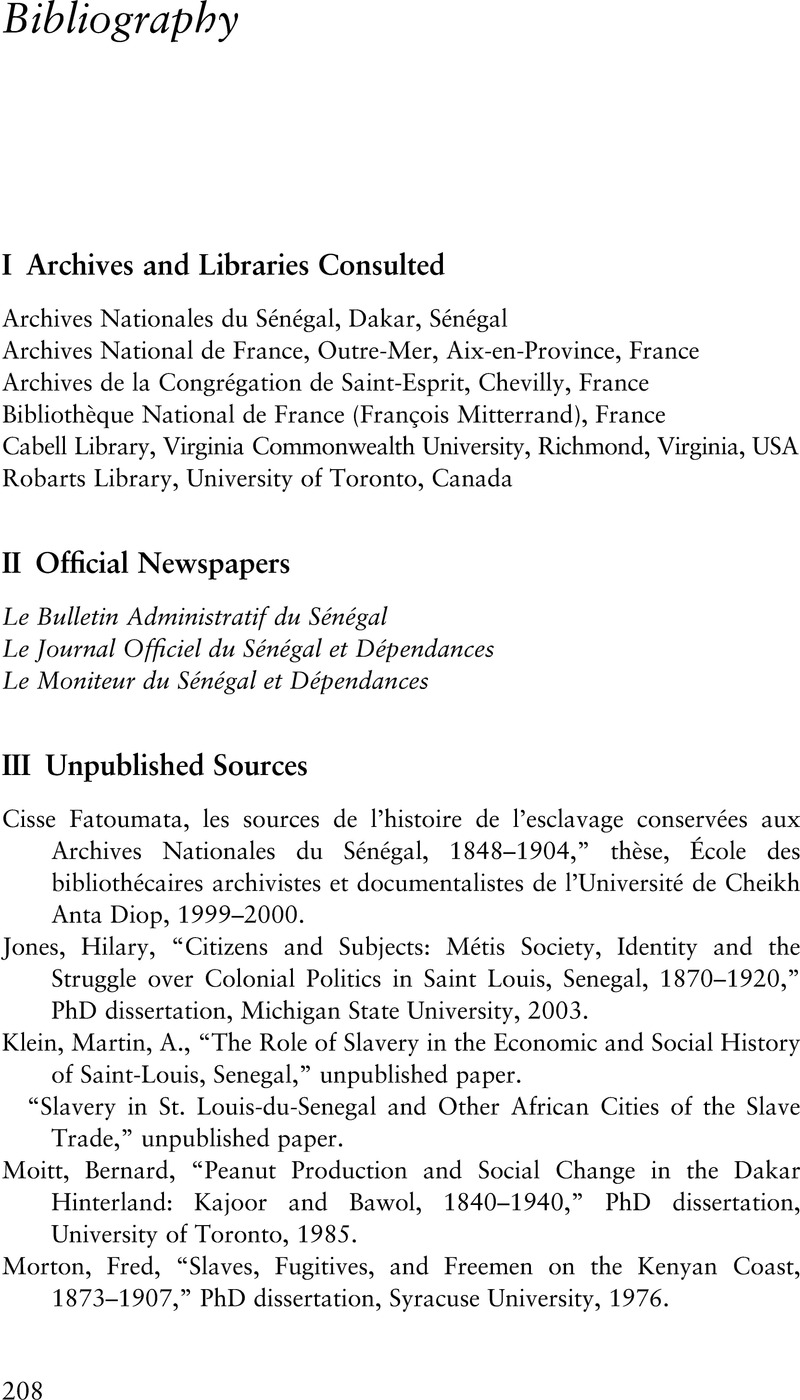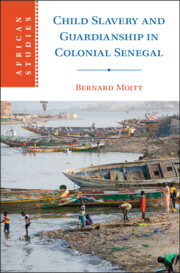Book contents
- Child Slavery and Guardianship in Colonial Senegal
- African Studies Series
- Child Slavery and Guardianship in Colonial Senegal
- Copyright page
- Dedication
- Contents
- Map of Senegal
- Figures
- Tables
- Preface
- Acknowledgments
- Introduction
- 1 Urban Senegal in the Second Half of the Nineteenth Century
- 2 The Evolution of Tutelle
- 3 Adoption of Minors and State Control of Tutelle
- 4 Legislating Guardianship, 1848–1900
- 5 Juvenile Labor, 1849–1905
- 6 The Crisis of 1903 and 1904
- 7 Minors in Institutions
- 8 Marriage, Life, Death, and Abuse
- Conclusion
- Bibliography
- Index
- African Studies Series
- References
Bibliography
Published online by Cambridge University Press: 19 October 2023
- Child Slavery and Guardianship in Colonial Senegal
- African Studies Series
- Child Slavery and Guardianship in Colonial Senegal
- Copyright page
- Dedication
- Contents
- Map of Senegal
- Figures
- Tables
- Preface
- Acknowledgments
- Introduction
- 1 Urban Senegal in the Second Half of the Nineteenth Century
- 2 The Evolution of Tutelle
- 3 Adoption of Minors and State Control of Tutelle
- 4 Legislating Guardianship, 1848–1900
- 5 Juvenile Labor, 1849–1905
- 6 The Crisis of 1903 and 1904
- 7 Minors in Institutions
- 8 Marriage, Life, Death, and Abuse
- Conclusion
- Bibliography
- Index
- African Studies Series
- References
Summary

- Type
- Chapter
- Information
- Child Slavery and Guardianship in Colonial Senegal , pp. 208 - 217Publisher: Cambridge University PressPrint publication year: 2023



